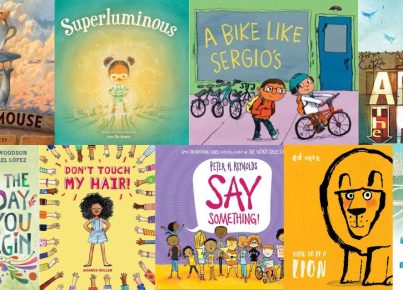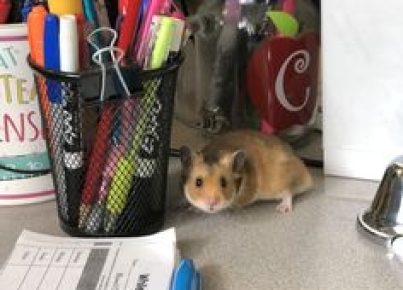Are you looking for middle school apps, tools, and resources that you can use with your students? If so, we have you covered. Check out our list below. Let us know if there are any that we missed.
Math Snacks– With many unique activities, animations, games, and tools, Math Snacks will help teach numbers, ratios, proportions, factoring, and pre-algebra. This is the perfect addition to elementary or middle school classrooms, to add extra fun in learning. It has been created with Common Core Standards and Mathematical Practices in mind to reinforce what is being taught in the classroom while also preparing children for tests.
Edulastic– Teachers can use this platform to assess and monitor student performance. Teachers can set up their classes and create assignments to evaluate their students. Tasks can be assigned using materials from the site or by creating tests to assess learning. Edulastic is a simple way to manage a class with online resources.
Loom – Loom is a screencasting tool, which can be used to record content from Google Chrome. It can be used to record video, audio, browser windows, or the entire screen. Once installed, users get access to all its features. Any recorded content can be shared via a link, and it can be saved to your account for later use.
The Mood Meter– This app is designed to analyze, track, and monitor mood. Users plot their moods on a color-coded chart, which has words to describe the feelings of the user. After deciding on your mood, the app tries to help you focus on strategies that may help lighten the atmosphere. Strategies include resources, which previous users have found useful for making similar moods better.
Typing Pal – This program is used to provide typing lessons for students. In Typing Pal, the emphasis is on accuracy, not speed. Three learning environments are provided for the students, and each one features different visuals and text. The program uses a classic setting that is applicable to typists of all ages.
TypingClub – This website is designed to teach people how to type using the touch-typing method. The website and lessons are free. TypingClub teaches kids the parts of the keyboard, finger placement, and other skills needed to become proficient. The app also offers interesting games for kids to do between lessons.
ThingLink– ThingLink is a tool used to embed multimedia content in videos and photos. To use this tool, teachers, and students upload videos and photos and link to resources on the Internet. These links may lead to web content, video recordings, photos, and instructional materials. The educational version of ThingLink allows teachers to add students into online classes.
Pearl Diver– With this app, you explore famous shipwrecks and submerged ruins for pearls, and you might find the highly sought black pearl. However, always look out for the pesky electric eel. It is suitable for children in grades three through eight (upper elementary and middle school students). It covers the Common Core Standards relevant to the number line and number properties. Pearl Diver was designed by math tutors, researchers, and game developers at the Learning Games Lab, New Mexico State University.
ST Math – If your school or district is moving away from standard math memorization and drills, ST Math is a resource that can help students explore and build a conceptual understanding of how math works. Students build problem-solving skills by working at their own pace through over 200 visually stimulating games. ST Math always begins by teaching concepts visually, then connects those visuals to symbols and language. This method ensures that all students, regardless of language ability or skill level, can access important new concepts. ST Math is standards-based and has content available for students in Pre-K through middle school. There is also a special section just for homeschooled students.
Stack the Countries– A valuable addition to social studies, geography, and world history classes, Stack the Countries is a stacking and collecting game that teaches students about capitals, landmarks, major cities, and more. For each successfully completed level, students earn a random country to add to their world map with the goal of collecting all 193. With more than 1,000 questions and 193 fact cards, Stack the Countries is a wealth of information. Students have the option to play with the entire world or selected continents depending on prior knowledge or as required by the assignment. Stack the Countries also comes with two bonus games: MapIt! and Pile Up!
Vocab Ahead– Vocab Ahead is available as a website or an app. It is designed to help students in middle school and up to develop their vocabulary using vocabulary videos and flashcards. Each vocabulary word is linked to a picture and a specific definition. Vocab Ahead also has specific categories for SAT words, GRE words, and more.
Math Snacks– With many unique activities, animations, games, and tools, Math Snacks will help teach numbers, ratios, proportions, factoring, and pre-algebra. This is the perfect addition to elementary or middle school classrooms, to add extra fun in learning. It has been created with Common Core Standards and Mathematical Practices in mind to reinforce what is being taught in the classroom while also preparing children for tests.
ST Math – If your school or district is moving away from standard math memorization and drills, ST Math is a resource that can help students explore and build a conceptual understanding of how math works. Students build problem-solving skills by working at their own pace through over 200 visually stimulating games. ST Math always begins by teaching concepts visually, then connects those visuals to symbols and language. This method ensures that all students, regardless of language ability or skill level, can access important new concepts. ST Math is standards-based and has content available for students in Pre-K through middle school. There is also a special section just for homeschooled students.
Hooda Math– This is a free online math game site created by a middle school math teacher. It offers more than 700 cool math games, which come with various challenges in the form of different puzzles and arithmetic problems. The games on this site are built to satisfy the idea of a teacher-approved games page requested a long time ago.
iPractice Math– IPracticeMath aims to offer a better education to everyone. Presently, our topics range from elementary school math to middle school math, and high school math will be introduced soon.
Pearl Diver– With this app, you explore famous shipwrecks and submerged ruins for pearls, and you might find the highly sought black pearl. However, always look out for the pesky electric eel. It is suitable for children in grades three through eight (upper elementary and middle school students). It covers the Common Core Standards relevant to the number line and number properties. Pearl Diver was designed by math tutors, researchers, and game developers at the Learning Games Lab, New Mexico State University.
Cell and Cell Structure Flashcards– This app presents the basic unit of life to middle school students, using detailed, stunning images 2-D and 3-D images. It is useful as a revision tool for high school students; teachers can use it as a great explanation tool.
Amazing Alex– Amazing Alex is a boy wonder that uses his endless stream of toys to solve problems creatively. In this app, Alex comes to test you and your ability to solve situations using your creativity. Amazing Alex lets you set objects to bounce, pop, ricochet, and create chain reactions as you create an elegant Rube Goldberg device. There are 100 challenges available, and other users continue to create new levels.
Cell Command– This fun app was designed to teach cell and cell functions to all students.
Legends of Learning– Legends of Learning has over 500 games about earth science, astronomy, life science, and physical science. With over 300 game developers and collaboration with Vanderbilt University, this is the hub for educational science games for middle school children. Many children get bored with cookie-cutter classes, especially when they have fun video games waiting for them at home. Bringing video games into education can help children learn because they can have fun while doing so. Academic ability, performance, and engagement have been increased by playing games such as these.
Mosa Mack– Mosa Mack allows elementary and middle school children to experiment with science without having to deal with the mess-ups and messes. There are tiered lessons that have animated puzzles, mysteries, and questions. Let your students into the lab without needing any experience and still let them learn effectively with this program.
Vernier Go Direct® Sensors with Graphical Analysis™ 4 – Go Direct® sensors collect real-time data from science experiments and lab work and connect directly to student computers or mobile devices. Each of the 40+ types of sensors offered by Vernier are all-in-one style sensors that come with software. Vernier also produces textbooks, with experiments designed to complement their sensors for Chemistry, Physical Science, and middle school science. All purchases include the free app Graphical Analysis 4, which helps students create real-time graphs of their experimental data.
The Human Body by Tinybop– The Human Body by Tinybop allows students to explore ly see the name. This mode is particularly useful when trying to learn a new region.
Amazing Space Journey– Amazing Space Journey lets you explore the solar system, other planets, and all their satellites in detail. The Interactive Learning feature makes it a fun and memorable experience for people of all ages. The 3-D Augmented Reality feature lets you lose yourself in the experience of the solar system from your home, office, or on a local flight.
Bio Digital Human– Explore the human body in 3-D using the BioDigital Human platform. Choose from thousands of immersive images to build your personal library. Responsive tools, along with detailed medical explanations, provide a fresh visual perspective for understanding the human body. This platform makes the knowledge of anatomy, physiology, pathophysiology, and management of medical conditions accessible and available.
BioInteractive– Biological research is coming to life at the BioInteractivewebsite, which includes apps, animations, videos, and virtual labs. Contents range from short videos on evolution hosted by award-winning authors to lessons about the brain delivered by Nobel prize-winning scientists. The team behind the scene features a fine mix of educators, artists, and scientists.
Study Island– Study Island is an all-in-one practice website for students to work on literacy, math, science, and social studies skills. It is built specifically around state standards, so regardless of your school’s location, you can rest assured that the content and practice provided on the website will align with your classroom teaching. Study Island is a great tool to use for high stakes testing preparation and provides real-time progress monitoring for teachers and parents. Beyond simple practice, Study Island can also be incorporated into classroom lessons for formative assessment and differentiation. It even allows teachers to import NWEA MAPassessment information for individual students and calculates a targeted learning path to fill in knowledge gaps!



